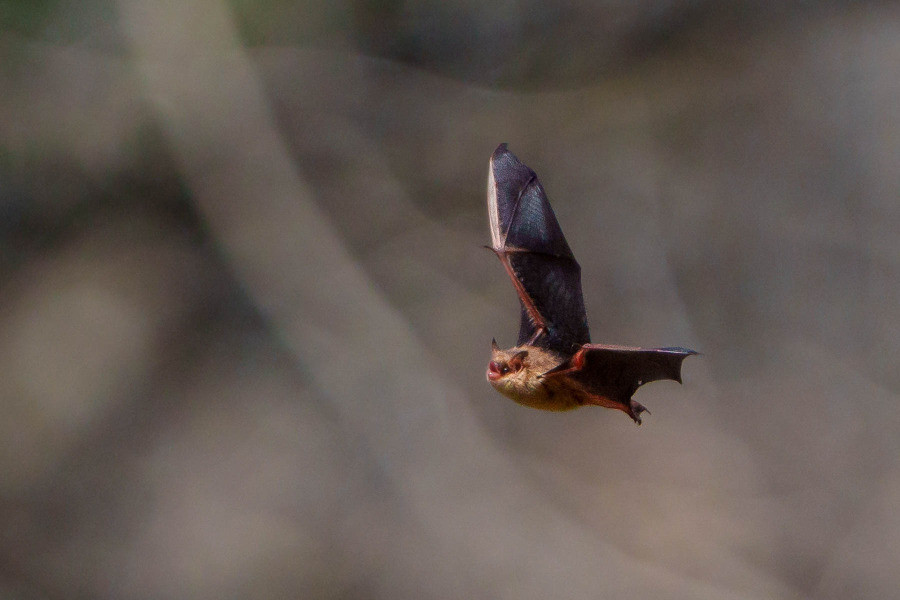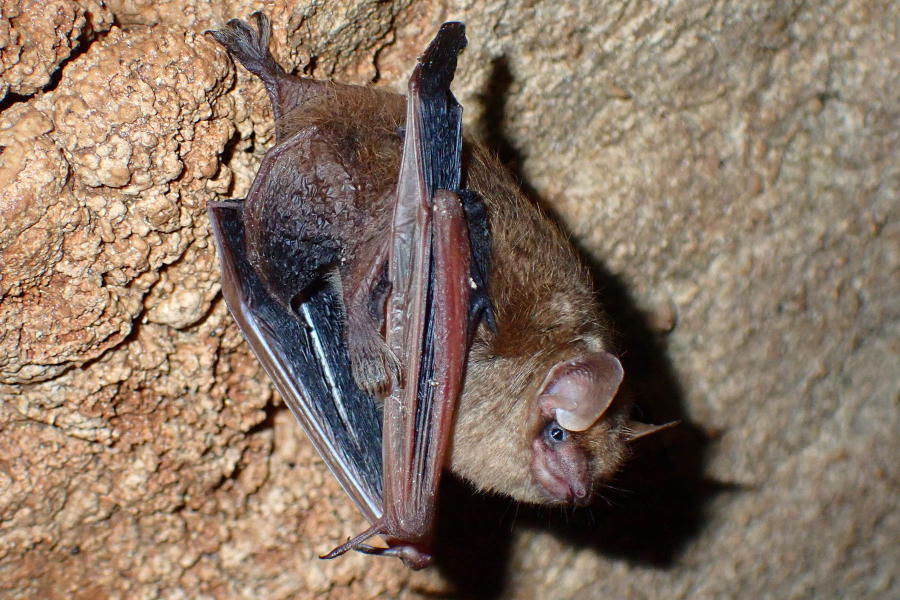This Halloween, let’s make bats the good guys
Why one of the smallest bats in the Bay watershed needs our help

When you think of cute animals, bats aren’t the first thing that comes to mind. Whether it’s because of the way they congregate in dark caves, their ability to spread viruses such as ebola or rabies, or their dubious connection to vampires, bats are often seen as a species to fear.
But these characteristics don’t paint a fair picture. Bats do hibernate in caves, but many will spend the other seasons roosting in trees and woody debris just like other mammals and birds. The diseases they can spread are also spread by mice, rats and monkeys. And only three out of 1,400 bat species consume animal blood (and they don’t live in North America).
If you were ever going to see a bat as cute—or at least, not creepy—it would be the tricolored bat. This tiny mammal is about three to three and a half inches long on average and weighs no more than a quarter. Its furry, protruding forehead folds over its eyes like a grumpy pug, and its coat can have a yellowish, almost orange look to it. The “tricolored” part of its name is because the bat’s fur appears dark at the base, lighter in the middle and dark at the tip.
In the winter, this credit card-sized bat hibernates in caves and mines, but during the spring, summer and fall, it can be found in forested areas roosting in trees or piles of leaves. In Virginia, they’ve been known to bundle up under piles of pine needles.

Tricolored bats, who live throughout the entire Chesapeake Bay watershed, are also a great form of pest control, particularly for grain moths and beetles. The U.S. Fish and Wildlife Service (USFWS) estimates that bats in general contribute at least $3 billion annually to the U.S. agriculture economy through pest control and pollination. Natural forms of pest control means farmers don’t need to use as many pesticides, which pollute local waterways.
Unfortunately, this fury, fun-loving, pest-eating critter lives in a perilous time. The dreaded White Nose Syndrome, which spreads between bats during winter hibernation, has decimated the mammal’s population. The syndrome (which affects other bats in the region) causes a fungus to grow on the critter’s face. That fungus causes them to wake up more frequently, which often results in dehydration and starvation before spring arrives. In colonies where White Nose Syndrome is active, 90–100% of the bats become infected.
The spread of White Nose Syndrome has gotten so bad that in September 2022, the USFWS proposed that tricolored bats be added to the Endangered Species list.
It stands to reason that bats such as the tricolored deserve far more sympathy than people tend to give them. Just imagine this tiny, furry little thing with a white fungus growing over its face, keeping it from getting the rest it so desperately needs. That to me sounds more like a victim than a monster.

Comments
There are no comments.
Thank you!
Your comment has been received. Before it can be published, the comment will be reviewed by our team to ensure it adheres with our rules of engagement.
Back to recent stories